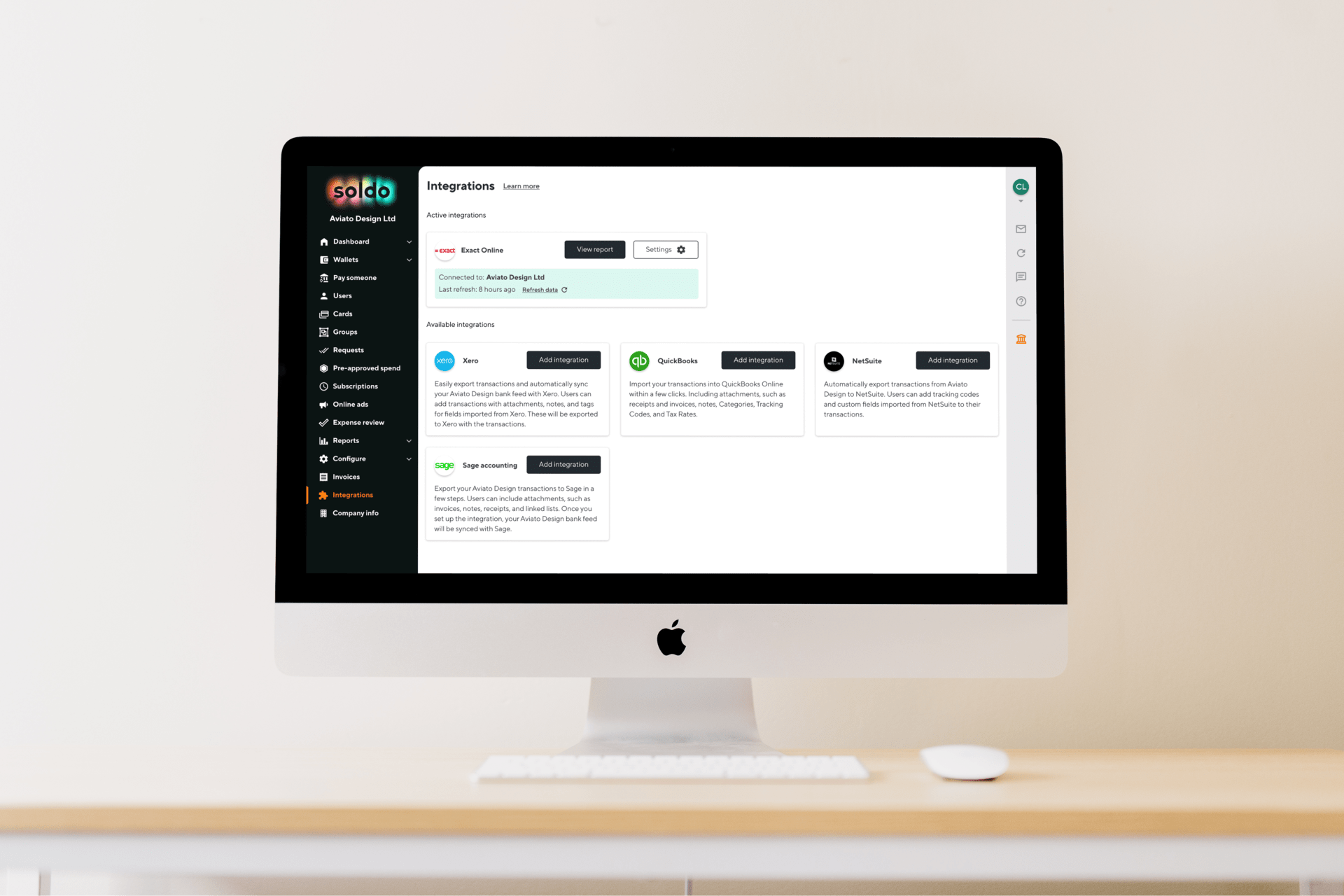When we talk about “finance automation” and “innovation”, we usually think of sophisticated AI-driven software that can do in seconds what it would take humans months or years to do.
But technology — some of which might look rudimentary by modern standards — has been improving, enhancing, and in some cases completely re-shaping finance for centuries.
In this post, we’ll take a look at five developments in finance automation that changed the course of finance. And helped it become the business-critical function it is today.
1. Double-entry bookkeeping
Double-entry bookkeeping is so basic it’s hard to think of it as an innovation, let alone automation. But, believe it or not, despite the existence of accounting records dating back to 7500 BC, it wasn’t until the 16th century that it became common practice.
The person most often credited with popularising double-entry bookkeeping is an Italian friar and mathematician called Luca Pacioli. But certain historians say it’s older, with some even arguing it dates back to Ancient Rome.
Regardless of who came up with the idea first, it’s no exaggeration to say double-entry bookkeeping changed the world.
Because debit and credit totals had to match, it created a built-in mechanism for spotting mistakes and detecting fraud. Business owners no longer had to continuously monitor their staff, and they could be more accountable to and transparent with investors.
But that’s just for starters.
The increased visibility also improved financial planning and made it easier for businesses to expand and grow. For this reason, some scholars argue double-entry bookkeeping is responsible for the rise of capitalism.
2. The adding machine
Few people pursue a career in finance unless they’re comfortable handling numbers. But, up to the late 19th century, it was tough even for those who lived and breathed them.
If you needed to work out sums — and, at the time, finance workers did sums all day, every day — you did so with your brain, fingers, pen, and paper. This made the process extremely tedious and tiring. And even the most diligent worker would eventually make mistakes.
As it happens, a young banker called William Seward Burroughs didn’t particularly care for numbers. His father forced him into a financial career and he hated every second of it.
Luckily, he was somewhat of an inventor. So he decided to end his and his colleagues’ pain by building a machine that could do sums for you.
Burroughs’ first adding machine, which he launched in the 1880s, was a bit delicate and not always accurate. But, by 1906, he owned 90% of the market, mainly because, like a Victorian Mark Zuckerberg, he acquired every one of his competitors before they had time to build their customer base.
Calculators have been a mainstay of offices across the world ever since. But they were arguably superseded by the next innovation on our list.
3. Spreadsheets
If you’re a regular reader of our blog, you know we often take swipes at spreadsheets.
But while it’s true they’re not fit for the digital age — they’re unwieldy, 88% have at least one mistake, and, let’s face it, technology has moved on by leaps and bounds — that doesn’t take away from what a game-changing innovation they were when they first came out.
Ironically (for a tool consistently branded soul-destroyingly tedious to work with), spreadsheets would have never seen the light of day if Harvard Business School student Dan Bricklin hadn’t been bored out of his mind.
One of his MBA professors, the story goes, had just spent the better part of an hour doing basic maths on the blackboard, and Bricklin’s mind wandered. Until, out of the blue, a thought struck him: “What if I could get all the sums to recalculate automatically when I change a value?”
Several hundred lines of computer code later, Bricklin had invented VisiCalc — the world’s first digital spreadsheet — impressed his classmates with the breadth of his financial projections, and single-handedly transformed the accounting profession.
The digital spreadsheet was such a powerful innovation because it made it much easier to manage large amounts of data.
Before it came along, budgeting, projections, or any other type of financial calculation entailed writing out vast columns of numbers on paper sheets. And if you made one tweak, you’d lose most of a day (and probably several bottles of correction fluid) to recalculate everything.
With the spreadsheet, you could change numbers or assumptions on the fly, and the software would rework everything instantly.
Of course, spreadsheets also have significant limitations.
They have to be populated manually, which is why they’re so prone to containing mistakes. And they’re stand-alone documents, so you may have duplicate data.
More to the point, there’s a limit to how much data they can handle. Plus, not all accounting software can import Excel. You may have to change the format, which can mess up your data. Or, worse, input everything into your software manually.
40-odd years ago, these limitations weren’t such a big deal. Finance teams were just happy not to have to contend with conference table-sized paper spreadsheets. And most accounting was done manually anyway — accounting software was rare and, when available, basic.
But the modern finance function has evolved and become much more data-driven.
Besides, why should we stick with technology from four decades ago, when we walk around with supercomputers in our pockets and fridges can suggest what we could cook for dinner?
4. The Cloud
If spreadsheets were a game-changer for finance teams, the Cloud has been a quantum leap.
Instead of everyone storing their documents on their own hard drives — where they’re hard to access and could get corrupted or accidentally deleted — the Cloud makes it possible to save, organise, and store data remotely, in one place.
This means finance teams can easily access important documents as and when they need them, even if they’re not in the office.
More significantly, though, the Cloud has enabled software to become much more sophisticated.
In the 1980s and 90s, technology companies had to spend huge sums of money on servers, physical space to store them, and specialised technicians to maintain the equipment. For this reason, most software was designed to do as many things as possible. It was the only way technology companies could be financially viable.
Similarly, businesses preferred all-in-one software because it was cheaper to buy and maintain. And two different programs were unable to talk to each other, anyway.
With the Cloud, technology companies no longer have to worry about these costs. It has become possible to create software more quickly and cheaply.
Developments such as APIs — application program interfaces — have also made it possible for different programs to work together, which has encouraged specialisation.
The upshot is that you can now buy software to help you with every aspect of finance imaginable: bookkeeping, spend management, risk management, business intelligence, horizon scanning… the list is endless.
5. Artificial Intelligence
Modern software has built-in commands that make it possible for you to automate repetitive, rules-based tasks. It can record and reconcile transactions, issue invoices, and send out payment reminders. And it can also do other things like calculate and categorise expenses, and work out your tax liability.
But artificial intelligence takes things to an even higher level.
AI can acquire knowledge, reason, and solve problems just like humans do.
Crucially, it can make new connections and adapt to new situations. As a result, it can carry out increasingly complex tasks like spend analysis, budgeting, and forecasting.
The most obvious benefits of AI are efficiency and accuracy. Data entry, calculations, and other tedious, time-consuming tasks take seconds instead of days. And there’s zero risk of mistakes.
But AI also has other compelling benefits.
It can detect patterns before they’re discernible to humans and predict potential outcomes. And that enables you and your team to be more responsive to change and have deeper insights to inform your decision-making.
Finance automation is a key to success
While “automation” and “innovation” sound like modern concepts, they’ve always been critical to the finance function.
People have been working to make financial data more efficient, accurate, and reliable for millennia. And, as technology has improved, it has enabled finance teams to help the businesses they serve more effectively.
“Finance automation,” says Enable CFO Nick Rose, “[drives] better advice from the finance team… you can get more insight, more depth, and more credibility.”
More importantly, as Melio’s Lena Loiberg observes, it gives you “more time to deal with strategic thoughts…”
And the more time you can afford to spend on strategy, the better-equipped you’ll be to adapt to a changing landscape and reach bigger, more ambitious goals.









